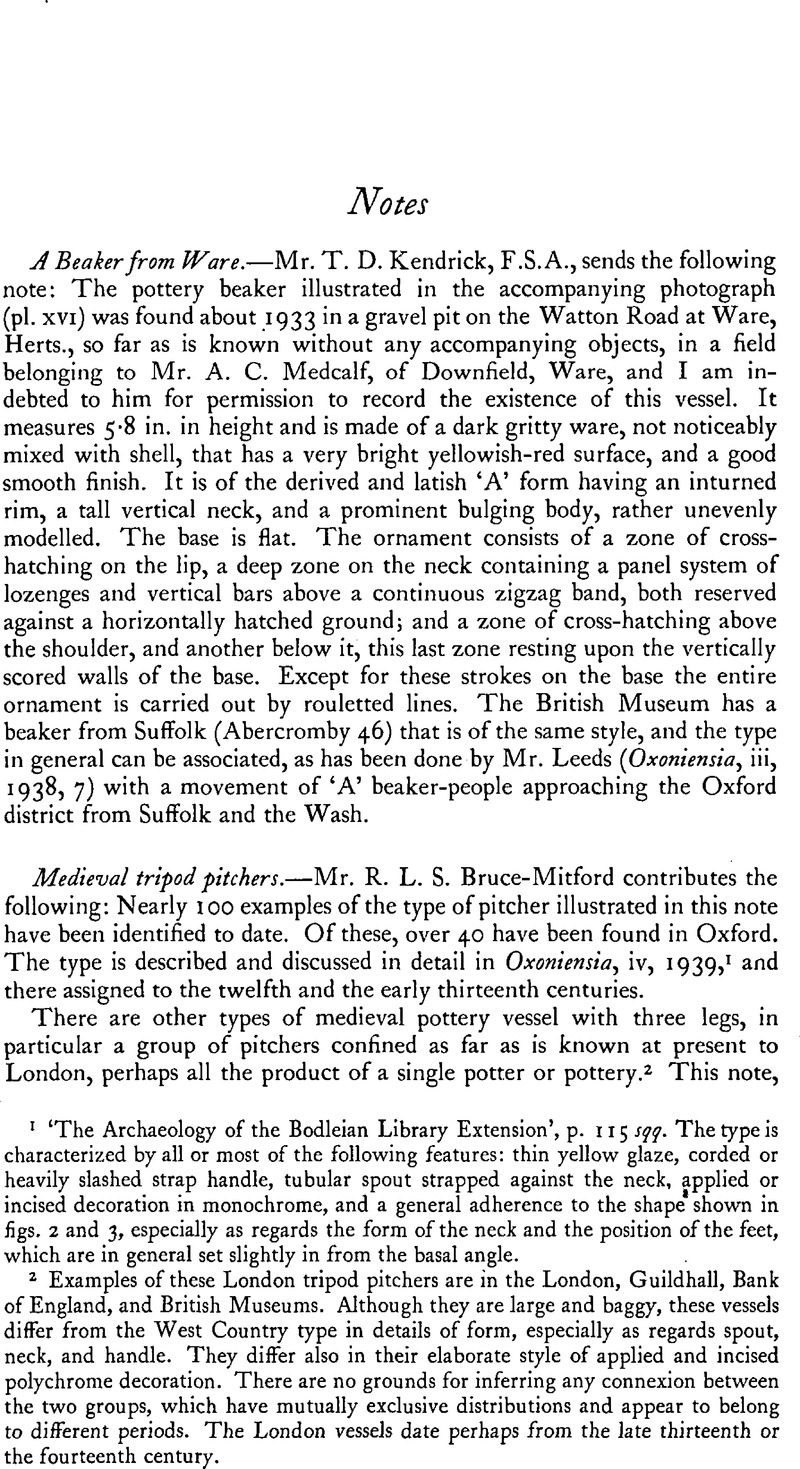No CrossRef data available.
Article contents
Medieval tripod pitchers
Published online by Cambridge University Press: 08 January 2012
Abstract

- Type
- Notes
- Information
- Copyright
- Copyright © The Society of Antiquaries of London 1940
References
page 103 note 1 ‘The Archaeology of the Bodleian Library Extension’, p. 115 sqq. The type is characterized by all or most of the following features: thin yellow glaze, corded or heavily slashed strap handle, tubular spout strapped against the neck, applied or incised decoration in monochrome, and a general adherence to the shape shown in figs. 2 and 3, especially as regards the form of the neck and the position of the feet, which are in general set slightly in from the basal angle.
page 103 note 2 Examples of these London tripod pitchers are in the London, Guildhall, Bank of England, and British Museums. Although they are large and baggy, these vessels differ from the West Country type in details of form, especially as regards spout, neck, and handle. They differ also in their elaborate style of applied and incised polychrome decoration. There are no grounds for inferring any connexion between the two groups, which have mutually exclusive distributions and appear to belong to different periods. The London vessels date perhaps from the late thirteenth or the fourteenth century.
page 105 note 1 British Museum Quarterly, xiii, no. 2 (1939), p. 35et seq.Google Scholar
page 105 note 2 Archaeologia, lxxxiii, 117. See also Archaeological Journal, xciv (1937), 133, fig. 2Google Scholar, for a later edition of this map. Mr. Ward Perkins's paper deals also with the distribution of late medieval tiles.
page 105 note 3 Antiq. Journ. xvi, 408.
page 105 note 4 For examples from Oxford see Oxoniensia, iv, fig. 22.
page 106 note 1 I am indebted to Mr. G. C. Dunning, F.S.A., for the particulars of the material from Gloucester, and to Mr. Chas. Greene, Curator of the Gloucester Museum, for permission to publish the drawings.


